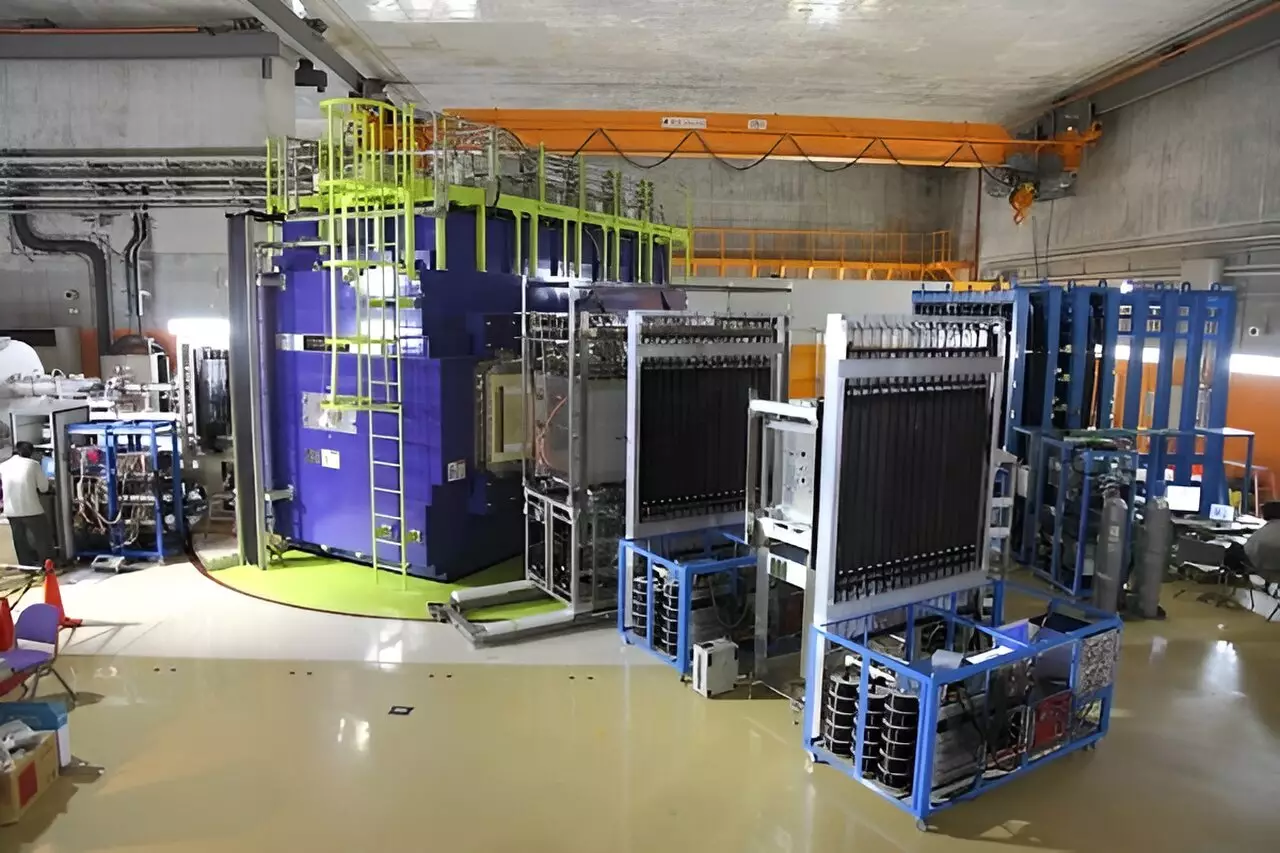In a remarkable scientific breakthrough, researchers at RIKEN’s RI Beam Factory (RIBF) in Japan have successfully detected the rare fluorine isotope 30F, utilizing the capabilities of the SAMURAI spectrometer. This detection is significant not merely for the isolation of a new nuclear structure but also for the potential insights it could provide into the exotic behaviors of nuclear matter under unique conditions. The SAMURAI21-NeuLAND Collaboration, a culmination of efforts from international researchers, has been pivotal in this discovery. Their findings are published in the peer-reviewed journal Physical Review Letters and suggest new directions for future nuclear research.
The observations surrounding 30F hold paramount importance as they enable scientists to probe the enigmatic world of neutron-rich isotopes. Traditionally, nuclear physics has focused on isotopes with more stable configurations, but as research pushes boundaries, the study of these extreme entities becomes increasingly crucial. According to Julian Kahlbow, a key figure in the research, this work could alter our comprehension of nuclear configurations, specifically regarding the existing theories of ‘magic numbers’ that denote particularly stable arrangements of protons and neutrons.
Magic numbers are theoretical markers within the atomic structure that suggest energy gaps between certain groups of nucleons. At neutron number N=20, we initially see these magic characteristics; however, their validity comes into question when researchers examine realms like the “Island of Inversion.” The research team emphasizes the need to study 30F and its neighboring isotopes for insights into how magic numbers might dissolve under extreme neutron configurations.
One of the most challenging aspects of studying 30F lies in its intrinsic properties as an unbound nucleus, which decays within 10-20 seconds of production. This brief existence poses significant challenges for measurement and characterization. Kahlbow and his collaborators overcame these challenges by reconstructing 30F from its decay products: 29F and a neutron. The process involved creating an ion beam of the isotopic precursor 31Ne using advanced techniques before initiating pivotal interactions that led to the production of 30F.
The precision of such experiments underpins the reliability of their results, allowing researchers to measure the neutron separation energy accurately. This information is integral to map out regions of the nuclide chart that exhibit unusual behaviors and properties, paving the way for future studies aimed at understanding complex nuclear states.
The research unveiled intriguing theories regarding the possibility of superfluid phases in the isotopes under study, particularly in the cases of 28O and 29F. Kahlbow points out the view that these isotopes might exist in a unique superfluid state—a rare phenomenon among isotopes—which would imply that neutrons behave in a collective manner, potentially forming pairs and occupying various energy levels.
Superfluidity in isotopes like 28O and 29F suggests a paradigm shift in how physicists understand the characteristics of nuclear matter, particularly under conditions of weak binding. The theoretical implications of these findings reach beyond immediate nuclear studies, intersecting with astrophysical models that describe stellar phenomena like neutron stars.
The results from the SAMURAI21/NeuLAND Collaboration have far-reaching implications for broader nuclear physics research. The possibility of superfluid states in isotopes could inform not just current understanding but future experiments aimed at discerning properties of halo nuclei—regions where one or two neutrons orbit far from a nuclear core. This opens up a plethora of research avenues, inviting investigation into the entire fluorine isotopic chain and potentially leading to revolutionary findings.
In addition, exploring neutron correlations and their pair sizes presents another fertile ground for research. Understanding how these interactions evolve in weakly bound systems promises to enhance theoretical models used in astrophysics, including the equations of state relevant to neutron stars.
The recent findings about 30F underscore the expanding horizon of nuclear physics as researchers continue to uncover the characteristics of exotic nuclei. With advanced accelerator technology making rare isotopes more accessible, a wealth of unexplored nuclear phenomena awaits investigation. As Dr. Kahlbow advocates for ongoing and future studies, he emphasizes the excitement that this discovery brings to the field, setting the stage for critical advancements in understanding nuclear matter. The collective efforts of the SAMURAI21/NeuLAND Collaboration not only illuminate new aspects of 30F but potentially revolutionize our grasp on the fabric of the nucleus itself.


Leave a Reply